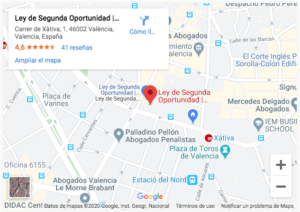1. Introduction: The Power of Symbols in Addressing Mortality
Throughout human history, symbols have served as powerful tools to grapple with the universal reality of mortality. These symbols—ranging from ancient mythological motifs to contemporary icons—carry profound meanings that help individuals and societies confront the inevitable end of life. They offer more than mere representations; they act as anchors for hope, resilience, and renewal.
Humans have always sought meaning and protection in the face of mortality. From ancient rituals to modern art, these symbols encapsulate a collective desire to transcend fear and find continuity beyond death. This article explores how symbols of mortality have evolved from myths like Orpheus to modern cultural phenomena, illustrating their enduring capacity to protect and revive us.
Contents
- Understanding Mortality Symbols: Concepts and Cultural Foundations
- Mythology and Symbols of Mortality: Lessons from Ancient Narratives
- Modern Interpretations: Can Symbols of Mortality Still Protect and Revive?
- Case Study: The Rise of Orpheus in Contemporary Media and Art
- Non-Obvious Depth: The Subtle Power of Symbols of Mortality in Personal Transformation
- Philosophical and Ethical Dimensions: The Limits and Potentials of Mortality Symbols
- Conclusion: Embracing Mortality Symbols as Modern Tools for Protection and Revival
2. Understanding Mortality Symbols: Concepts and Cultural Foundations
Symbols related to mortality serve crucial psychological and cultural functions. They act as mental anchors that help societies and individuals cope with loss, fear, and the unknown. For example, the use of skull motifs in European memento mori art during the Renaissance was not only a reminder of death but also a call to live meaningfully. These symbols foster resilience by providing a framework to confront mortality without succumbing to despair.
Culturally, mortality symbols reinforce collective identity. They unify communities through shared rituals, stories, and art that acknowledge mortality as a fundamental aspect of human existence. The Day of the Dead in Mexico, for instance, employs skull imagery and altars to celebrate and remember loved ones, transforming grief into a communal act of renewal.
Research from psychology indicates that engaging with mortality symbols can enhance psychological resilience. Terror Management Theory, developed by Greenberg, Solomon, and Pyszczynski, suggests that cultural symbols of mortality provide a sense of permanence and meaning, helping individuals manage existential anxiety.
3. Mythology and Symbols of Mortality: Lessons from Ancient Narratives
a. The myth of Orpheus: love, loss, and the desire to transcend death
The Greek myth of Orpheus embodies humanity’s deep longing to overcome mortality through art and love. Orpheus’s journey into the Underworld to retrieve Eurydice symbolizes hope, faith, and the power of music and storytelling to confront death. His story underscores that even in the face of loss, the human spirit seeks renewal.
b. Eurydice’s story: tragedy intertwined with hope and renewal
Eurydice’s tragic death and Orpheus’s futile attempt to bring her back highlight the fragile boundary between life and death. Yet, the myth’s enduring appeal lies in its themes of perseverance and the possibility of rebirth—concepts that continue to inspire modern symbols of hope.
c. Greek meander patterns: symbols of infinity and unity in mortality
The Greek meander, a continuous geometric pattern, represents eternity, unity, and the cyclical nature of life and death. Its endless design echoes the idea that mortality is part of an ongoing cycle of renewal, a motif found in ancient art and architecture.
4. Modern Interpretations: Can Symbols of Mortality Still Protect and Revive?
Today, symbols of mortality continue to play vital roles in culture and mental health. They serve as means to process grief, foster hope, and build resilience. For instance, memorials and commemorative art allow societies to remember the deceased while inspiring future generations.
Contemporary artists and storytellers reinterpret ancient symbols, infusing them with new meanings. The resurgence of stories like Orpheus’s—embodied in modern media—illustrates how ancient themes of love and renewal resonate with current struggles against mortality. These narratives underscore that symbols can be both protective and regenerative.
A compelling example is the rise Of orpheus initiative, which bridges ancient myth with contemporary storytelling, demonstrating that renewal is an ongoing human pursuit, even amidst mortality.
5. Case Study: The Rise of Orpheus in Contemporary Media and Art
a. The narrative’s adaptation in operas, plays, and visual arts
Modern adaptations of Orpheus’s myth appear in various forms— from operas like Monteverdi’s “L’Orfeo” to visual arts and films—each emphasizing themes of love, loss, and transcendence. These reinterpretations serve as a testament to the myth’s enduring relevance as a symbol of hope and resilience.
b. How the myth’s themes resonate with modern struggles against mortality
Current societal challenges—such as grief from loss, terminal illnesses, and existential crises—find echoes in Orpheus’s story. Its themes encourage individuals to seek renewal through art, memory, and community, illustrating that symbols of mortality can inspire personal and collective revival.
c. The symbolic power of Orpheus’s story in inspiring resilience today
The myth’s resilience in modern culture exemplifies how symbolic narratives nurture hope. For example, the story’s presence in contemporary media underscores that even in the face of death, the human spirit can find ways to revive and renew itself.
6. Non-Obvious Depth: The Subtle Power of Symbols of Mortality in Personal Transformation
Symbols are not only external markers but also internal tools for confronting personal fears and grief. Personal stories abound of individuals using symbols—such as a piece of jewelry, a song, or a ritual—to navigate loss and find meaning anew.
The process of symbolic renewal involves transforming grief into growth, often facilitated by engaging with meaningful symbols. Psychological studies show that such practices can foster resilience by helping individuals reframe their relationship with mortality.
For example, a person who lost a loved one might find comfort in creating a memorial art piece, which becomes a symbol of ongoing connection and renewal. These internal symbols serve as guides on the journey from grief to resilience.
7. Philosophical and Ethical Dimensions: The Limits and Potentials of Mortality Symbols
A fundamental question arises: can symbols truly protect us from mortality, or do they merely help us cope? Scholars argue that while symbols do not prevent death, they provide essential psychological buffers that enable us to face mortality with courage.
Ethically, societies must be cautious in how they utilize mortality symbols. Over-commercialization or superficial use can diminish their depth and significance. Instead, fostering authentic engagement with symbols—whether through art, ritual, or storytelling—can support societal healing and individual resilience.
As modern life becomes increasingly complex, the relationship between mortality awareness and hope evolves, emphasizing that symbols are dynamic tools aiding us in navigating existential realities.
8. Conclusion: Embracing Mortality Symbols as Modern Tools for Protection and Revival
In summary, symbols of mortality possess a transformative potential that extends beyond mere representation. They serve as catalysts for protection, resilience, and renewal—especially when actively engaged with, both culturally and personally.
Encouraging individuals and societies to explore and incorporate these symbols can foster a more profound acceptance of mortality, leading to a more resilient and hopeful outlook on life. The enduring relevance of myths like Orpheus underscores that, through symbols, we can find pathways to revive ourselves even in the face of life’s ultimate challenge.
“Symbols of mortality are not mere reminders of death—they are gateways to understanding life’s enduring power to renew and revive.”
For those interested in exploring how ancient myths continue to inspire contemporary resilience, the rise Of orpheus project exemplifies this ongoing journey of renewal through storytelling and art.

